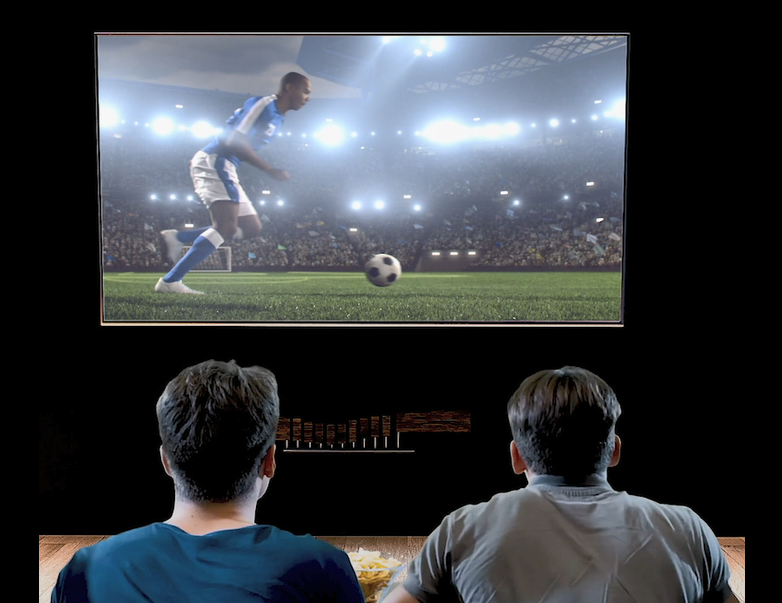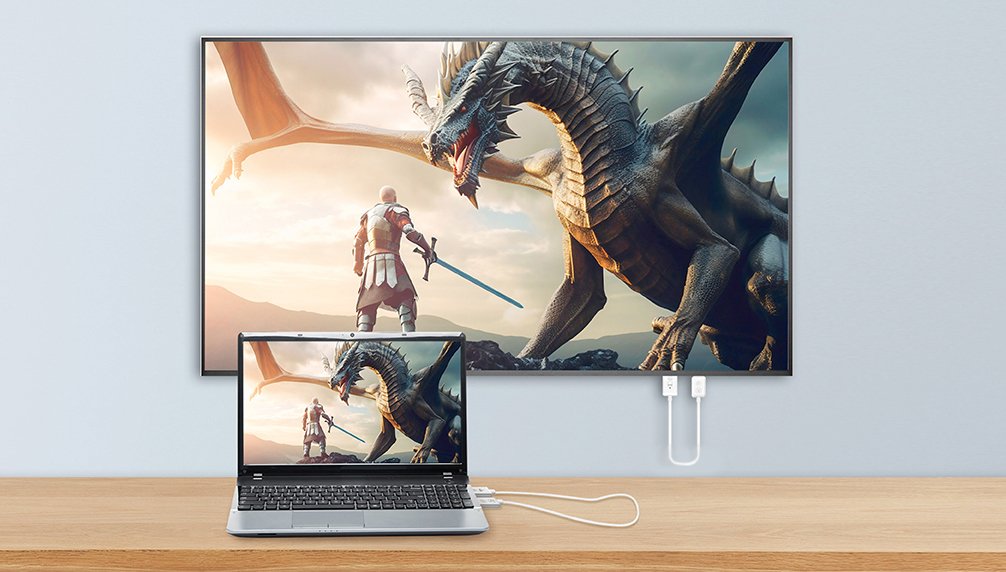2023-12-27 | EZCast
Differences between Smart TV, Dongles, and TV Boxes
Introduction
Traditionally, screen mirroring between mobile phones and monitors/projectors relied on wired connections, necessitating adapters or cables that restricted mobility and convenience. However, thanks to the ongoing advancements in wireless screen mirroring technology and the widespread use of smart devices, wireless screen mirroring has emerged as a more convenient and flexible alternative. Now, we can effortlessly transmit content from our phones to larger screens, thereby enhancing viewing experiences and streamlining activities such as entertainment, work, and presentations.
This article will explore different methods for wireless screen mirroring, utilizing smart TVs, dongles, and TV boxes. Whether you seek to elevate your home entertainment setup or deliver impactful presentations to a sizable audience at work, this guide will help you identify the most fitting method to meet your specific requirements.
Advantages and Disadvantages of Various Wireless Screen Mirroring Methods
(1) Smart TV:
Advantages:
Convenience: Wireless screen mirroring on a smart TV eliminates the need for cables or adapters, simplifying the connection process and improving mobility and convenience.
Ease of Use: User-friendly interface and often simple setup procedures.
Disadvantages:
Compatibility Limitations: Different brands and models of smart TVs may support different casting protocols, limiting compatibility with certain phones.
Feature Limitations: Some smart TVs may have simplified features, lacking advanced options and customized settings.
Firmware Update Limitations: TV firmware updates are generally slow, making it challenging to keep up with the latest phone, computer operating systems, and video software.
Cost: Smart TVs can be more expensive compared to other solutions.

(2) Dongle:
The primary reason forusing a dongle is that the television or projector itself does not support wireless screen mirroring, or the built-in mirroring functionality is not sufficiently effective. In such cases, it is more advisable to consider purchasing an additional dongle.
Advantages:
Universal Compatibility: Dongles usually support various casting protocols such as Miracast and AirPlay, making them compatible with various phones and displays.
Portable: Compact and easy to carry for on-the-go use.
Affordable: Generally more cost-effective compared to purchasing a new smart TV.
Disadvantages:
HDMI Port Dependency: Requires an available HDMI port on the display device.
Power Source: May need a separate power source.
Setup Complexity: Initial setup might involve additional steps.

(3) TV Box:
Advantages:
Versatility: Offers additional features like app installations and gaming.
Mobility: TV boxes are standalone devices that connect to different displays or TVs at home, in the office, or during travel.
Disadvantages:
Complexity: Additional features may result in a steeper learning curve.
Compatibility: Different brands and models of TV boxes may have varying compatibility with phones, requiring users to ensure compatibility.
(4) The Differences and Similarities of Wireless Screen Mirroring Methods:
Differences:
Functionality: Both smart TVs and TV boxes offer extra functions like apps and Internet browsers, while dongles don’t.
Limitation on Streaming Apps: Popular streaming apps like Netflix, Hulu and so on are not supported by a great number of dongles due to copyright protection.
Mobility: If you want to screen mirror everything on the go, dongles are apparently a better solution than TV boxes and smart TVs.
Similarities:
Network Stability: Smart TVs, dongles, and TV boxes all require Wi-Fi connection, and therefore if the network is unstable or the signal is weak, it may lead to interruptions, delays, or a decrease in image quality.
Setup Steps: Before starting screen mirroring, all of the methods above require you to set up power, cables, Wi-Fi, and even app installations. Sometimes, it can be time-consuming to make sure everything is ready and steady.
(5) Wireless Transmitter and Receiver Kit:
Upon examining the differences and similarities of screening mirroring among Smart TVs, dongles, and TV boxes, a shared concern emerges—setting up Wi-Fi and network stability. In light of this, a wireless transmitter and receiver kit emerges as an ideal solution.
Tailored for point-to-point screen mirroring, wireless transmitter and receiver kits eliminate the need for app installations and Wi-Fi networks. Effortlessly connect the transmitter to your mobile device and the receiver to a monitor or projector, allowing them to seamlessly pair within seconds, triggering automatic screen mirroring.
As a leader in the wireless display domain, EZCast's transmitter and receiver kits boast exceptional portability. Their simplified setup process, coupled with an ultra-small form factor, unquestionably outshines the convenience provided by traditional dongles.


EZCast Pocket Transmitter + Receiver Kit and Compact Mate Transmitter + Receiver Kit
Comparison
Portability Ranking: Wireless Transmitter and Receiver > Dongle > TV Box > Smart TV
Additional Features Ranking: Smart TV > TV Box > Dongle > Wireless Transmitter and Receiver
Cost Ranking: Smart TV > TV Box > Dongle > Wireless Transmitter and Receiver
Based on the distinctions highlighted earlier, it is clear that smart TVs, dongles, TV boxes, and wireless transmitter and receiver kits possess unique advantages, making them well-suited for specific scenarios.
EZCast employs advanced wireless display technology, offering the smallest point-to-point transmitter and receiver package on the market, achieving a size and cost that surpasses dongles.
Scenarios Suitable for Smart TV:
Home Entertainment Center: Smart TVs, as the primary display, can directly cast content from phones, tablets, or computers onto the large screen for the entire family's enjoyment.
Living Room or Meeting Room: Smart TVs with large screens and high resolution are suitable for watching movies, playing games, or conducting business presentations. Wireless casting facilitates sharing and showcasing content.
Scenarios Suitable for Dongle:
Home Budget Upgrade: For non-smart TVs or displays lacking smart features, users can connect a screen casting/mirroring device such as a Wi-Fi display dongle or a transmitter and receiver kit to upgrade and achieve wireless display and smart functionality.
Mobile Office: Dongle's portability makes it suitable for mobile office environments. Users can connect the device to external displays or projectors to cast content for presentations, demonstrations, and work.
Hotels or Travel: During travel, users can carry a screen casting/mirroring device to cast content from phones or tablets onto the TV provided by hotels, enhancing the viewing experience.
Scenarios Suitable for TV Box:
Non-Smart TV Upgrade: For users with non-smart TVs looking for advanced features beyond online video watching and mobile screen casting, a TV box is a recommended choice.
Customization Needs: Some TV boxes offer more customization and application extension capabilities. Users can install specific applications based on their needs and interests, creating a personalized casting experience.
Scenarios Suitable for Wireless Transmitter and Receiver Kit:
Home Entertainment without Limits: For users with non-smart TVs looking for a straightforward setup. Especially perfect for users who don’t have a Wi-Fi network at home.
On-the-Go Flexibility with Privacy: During hotel stays, instead of logging into public smart TVs, users can mirror any content from their mobile devices to the hotel room's TV, ensuring the security of personal information.
Business Travel: As a highly portable wireless display device, it is much stabler and more convenient than a dongle.

Conclusion
Selecting the appropriate wireless screen mirroring method depends on factors such as device compatibility, ease of use, cost, and additional features. Consider these aspects to make an informed decision based on your specific requirements and preferences:
If you already purchased or plan to buy a new TV, choosing a smart TV with an Android system is recommended.
If you frequently use casting for business presentations, or business trips, or have a low budget, a relatively inexpensive and lightweight screen mirroring device such as a transmitter and receiver kit may be more suitable.
If you already own a non-smart older TV but want to upgrade it to a device with an Android system for additional advanced features, consider using a TV box.
Shop at Amazon - Compact Mate 2 Transmitter + receiver Kit (HDMI Version)
About Us
Actions Microelectronics Co., Ltd. is a leading provider of wireless display solutions, offering OEM/ODM services from chip ICs and modules to end products. EZCast is the technical brand of Actions Microelectronics Co., Ltd. and is known for its popular app. Leveraging Actions Micro's chipsets and EZCast's transmission technology, the company provides wireless display chip platforms and related services for consumer, educational, commercial, and industrial applications.
Like this content? Don’t forget to follow us!